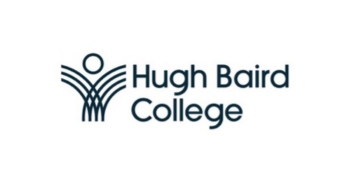Back in 2022 at AELP’s national conference, the then skills minister Alex Burghart threw down the gauntlet – he set an ambition for apprenticeship qualification achievement rates (QAR) to hit 67%. At the time, with QARs hovering stubbornly around 50%, that goal seemed, well… let’s say ambitious.
Critics didn’t hold back. They wielded that QAR figure like a stick, beating up the apprenticeship programme – and independent training providers in particular.
But here’s the thing. While the noise continued, the sector did what it always does: people put their heads down and got on with the hard graft.
And now? It’s paying off.
We’re delighted (and let’s be honest, a little bit proud) to welcome the Department for Education’s announcement that apprenticeship QARs have risen to 60.5%. That’s a significant milestone. A symbolic threshold crossed, decisively.
This is not by chance. It’s the result of year-on-year improvement, built through dedication and detailed work at every stage of the learner journey: from engaging employers and line managers more effectively, to setting clearer expectations for learners, to strengthening onboarding and pastoral care, to innovating in teaching, to sharpening up admin across the programme.
Crucially, people haven’t done this alone – we’ve done it together.
We’ve seen collaboration like never before. Providers learning from each other. Peer support and shared practice flourishing, including through the excellent Apprenticeship Workforce Development programme. At AELP, we’re proud to have played a big part in that, though we’re certainly not the only ones.
We’ve worked closely with the government to remove friction from the system – wins like simplifying the apprenticeship funding rules, pushing for better data sharing and improving funding clarity for our members.
We’ve explained to the wider economy how apprenticeships actually work, and how employer groups can be part of the solution. We’ve cultivated a community of providers through special interest groups, sector forums (now relaunched as the AELP Exchange) and our packed calendar of events and conferences.
A great example is this week’s AELP Maths & English Conference. The feedback was the most positive we’ve ever had because it was practical, focused and built around what providers need.
This is all backed up by improvements made in Ofsted inspection outcomes too: 90% of learners are now with good or outstanding providers, up from 86% last year.
So yes, 60.5% is a reason to celebrate. But we’re not stopping here.
We anticipate further increases in the coming year, powered by both the sector’s ongoing commitment to improvement and as the impact of policy changes start to feed through and have an impact (like adjustments to functional skills qualification policy).
AELP’s second mini-commission will soon be identifying the next wave of improvements, especially around how we use data to drive even more sophisticated, learner-focused interventions, and how employers can have greater accountability.
The momentum is real. The ambition is growing. The results are visible.
So, here’s our message to policymakers, particularly those at HM Treasury: don’t waste this moment.
Apprenticeship funding works. These numbers prove it. And the sector is ready to go further if it gets the backing it deserves. Simplifying access, cutting red tape and giving providers the resources and flexibility they need must be a priority.
We also need to ensure that funds raised for apprenticeships are actually spent on apprenticeships. We need to unlock the £800m gap between what’s raised by employers to spend on apprenticeships, and what the Treasury lets them spend.
We’re not just hitting targets anymore. We’re transforming lives, powering growth and reshaping the future of the UK workforce.
Let’s build on this milestone and turn this latest data into a launchpad for even more improvements.















When and why did many in the sector start to call apprentices, learners?